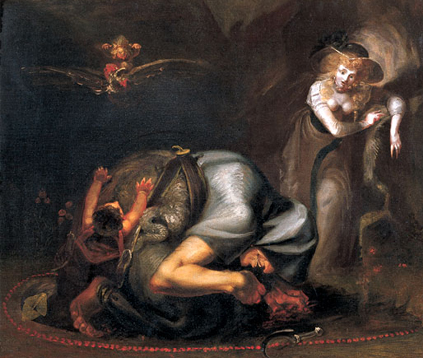Andrew Graham-Dixon reports on an exhibition dedicated to a forgotten school of British history painting
Enter Friar Lawrence, stage left, bearing a torch. What does he see? Romeo, having dispatched Count Paris before poisoning himself, dead on the tomb of the Capulets; Juliet, bewildered and disoriented, in a state of shock. James Boydell, who commissioned James Northcote's painting A Monument Belonging to the Capulets, Romeo and Paris Dead; Juliet and Friar Lawrence, must have been pleased. This was perfect material for Boydell's ''Shakespeare Gallery'', which opened in Pall Mall in 1788. Boydell was a printseller, not a philanthropist: he was happy to popularise the Bard, but the real point was to sell as many engraved reproductions of each picture as possible. Northcote's painting was just the ticket for an audience raised on the swooning heroines of the eighteenth-century novel.
A Monument Belonging to the Capulets, etc is a painting of a kind rarely seen these days. Museums tend to keep such works in store - although a few years ago the Tate Gallery did mount an exhibition of sub-ject pictures by Northcote's ambitious and unhappy contemporary, James Barry - and most commercial gal-leries have long since given up trying to create a market for them. Most, but not all. ''The Painted Word: Brit-ish History Painting 1750-1830'', at Heim, is a bold exhibition - it may not be easy, in a recession, to per-suade collectors that Northcote's 12-foot by 10 tearjerker is a bargain at pounds 40,000 - which attempts to rehabilitate a forgotten school of British narrative painting.
Northcote's painting and its kind are commonly regarded as freaks, as the eccentric by-products of a native tradition better suited to other, less declamatory genres: chiefly landscape and portraiture. But landscape and portraiture were considered, well into the nineteenth century, to be...


